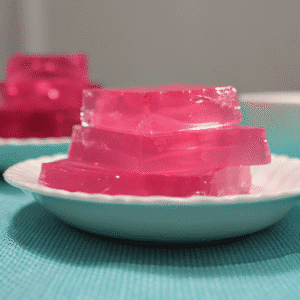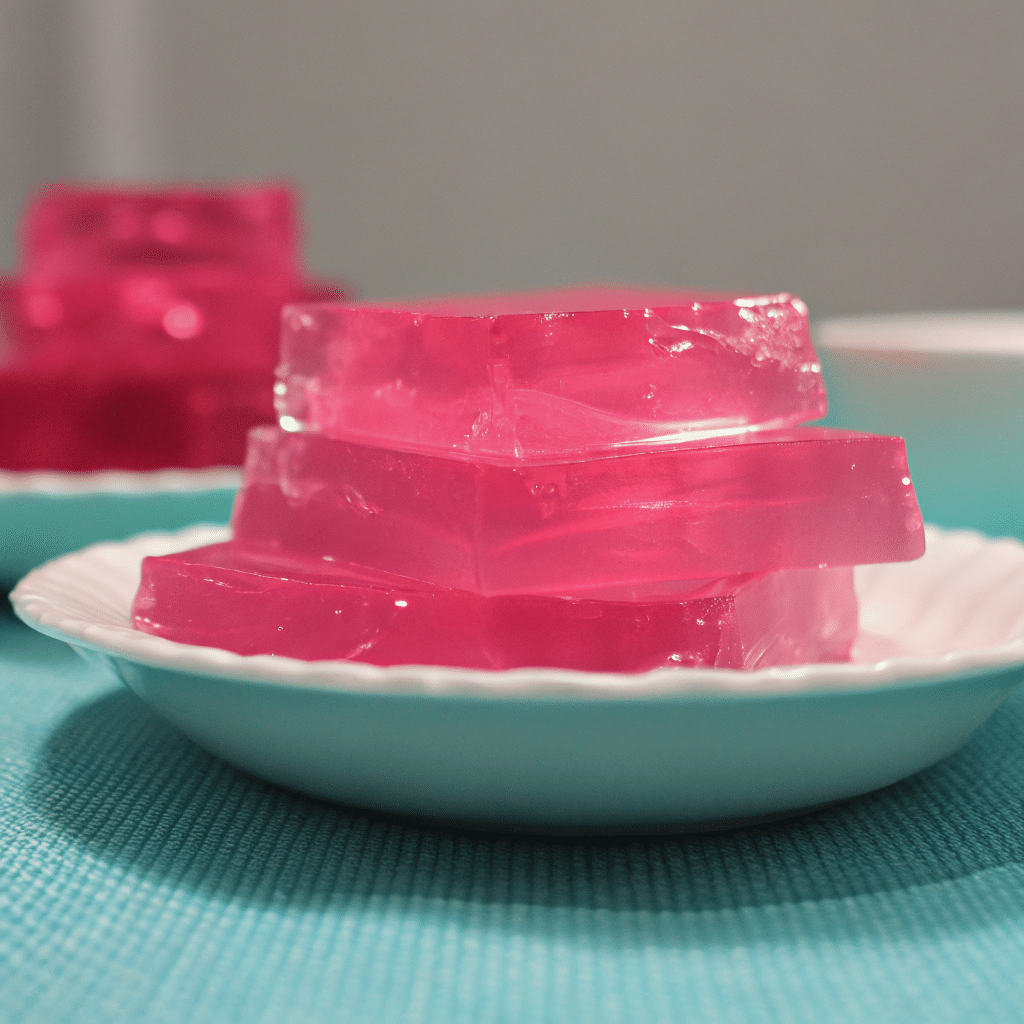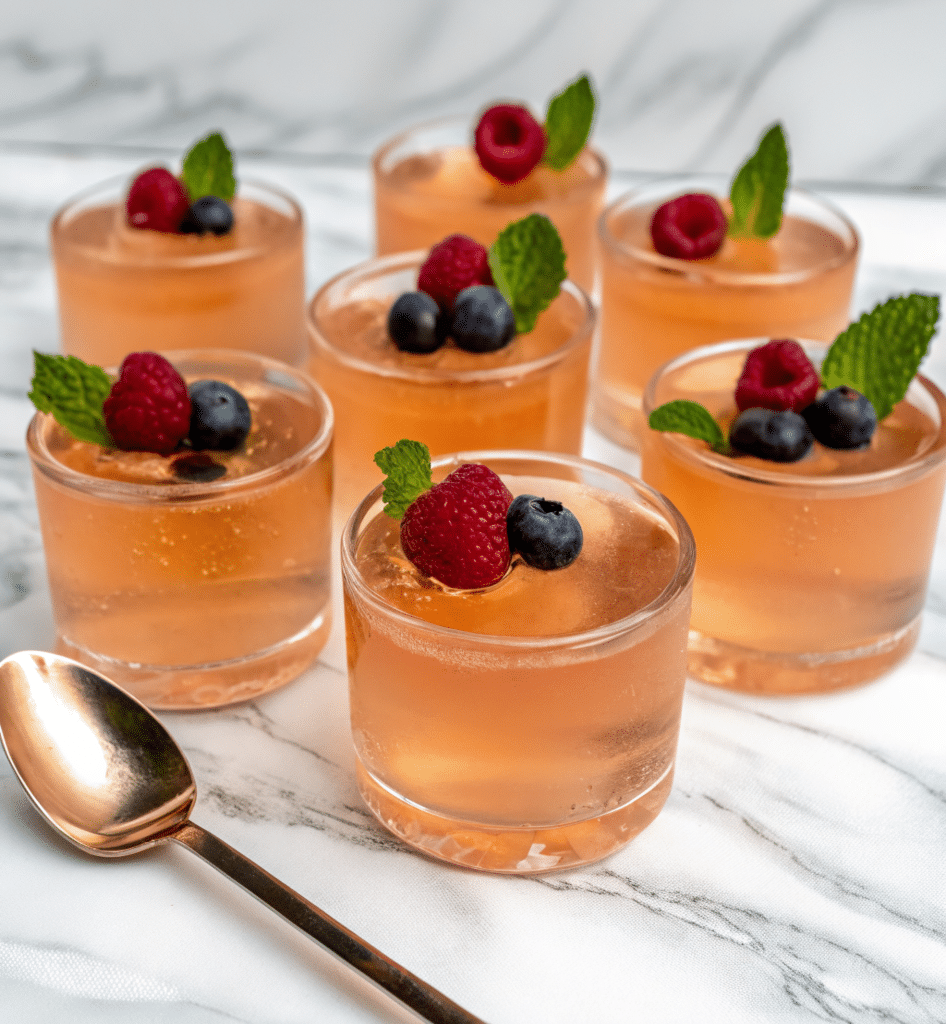Welcome! So glad you’re here. I’m Anissa—the cook, photographer, and writer behind this cozy little space. Today, I’m sharing something unexpected but genuinely fun: electrolyte jello. This quirky treat was born out of a hot summer afternoon and my endless curiosity in the kitchen. After a long walk with my husband (my #1 taste tester and biggest cheerleader), I started tinkering with ways to stay hydrated without another sports drink. What came out of the fridge? Jello. But not just any jello—one packed with minerals to refresh and replenish. Let’s dive into the story and how you can make it, too.

Electrolyte Jello
Ingredients
- 2 cups water hot
- 2 tbsp unflavored gelatin
- 1 serving electrolyte powder e.g., Ultima, GU
- 1/2 cup fruit purée or juice optional
Instructions
- Bloom gelatin in ½ cup hot water.
- Whisk until completely dissolved.
- Stir in electrolyte powder and optional fruit purée.
- Pour into molds.
- Refrigerate 2 hours until set.
Notes
Use natural gelatin for cleaner results.
Great after workouts or on hot days.
Mixing Science with Fun: How Electrolyte Jello Began
I first tried electrolyte jello during a sweltering July afternoon when I was experimenting with fun ways to stay hydrated after a long jog. I remember melting a packet of Ultima powder into hot water, whisking in gelatin, and chilling it until set. The result? A colorful, bouncy cube that tasted like summer and delivered essential minerals—truly hydration in edible form.
I’ve always loved the ritual of cooking—chopping fresh produce, inhaling the aroma of spices—but turning hydration into a snack felt like kitchen magic. That first bite wasn’t just delicious, it was purposeful. The term “electrolyte jello” stuck, and it’s since become a go‑to for my husband and me on hot days or after evening workouts.
Why It Works
Electrolytes—like sodium, potassium, calcium, and magnesium—play pivotal roles in our body: they regulate fluid balance, muscle contractions, and nerve signals. According to Triathlon Magazine, combining a hydration mix such as GU powder with gelatin creates a jiggly treat that still delivers those essential minerals. Adding electrolyte powder to gelatin isn’t just about taste—it’s about maintaining balance, preventing cramps, and staying energized.
Plus, unlike plain water, electrolyte jello slows fluid release into your system, offering sustained hydration and a satisfying texture—all while feeling like a light dessert.
Whip Up Your Own Electrolyte Jelly
Ready to learn how to make electrolyte jelly? It’s easier than you’d think—and much more fun than sipping a sports drink. Here’s a straightforward recipe to get you started:
Ingredients
- 2 cups water (hot)
- 2 tbsp gelatin powder
- 1 serving electrolyte powder (like Ultima, GU, or your favorite)
- Optional: ½ cup fruit purée or juice (for flavor and color)
Instructions
- Bloom the gelatin: Pour ½ cup of hot water into a heatproof bowl. Add the gelatin and whisk until completely dissolved—no lumps!
- Add electrolytes: Stir in your electrolyte powder until fully mixed. This step is what transforms simple jello into electrolyte jello, delivering sodium, potassium, and magnesium in every cube.
- Blend in flavor: If you’d like fruity sweetness, stir in your purée or juice now—think fresh strawberries, mango, or citrus.
- Chill to set: Pour the mixture into molds or a shallow dish. Let it cool to room temperature, then refrigerate for at least 2 hours until firm.
The result? A fun, delicious way to hydrate with electrolyte jello you made yourself.
Flavor & Texture Variations
- Sugar-free option: Swap fruit juice for flavored sparkling water to cut calories while keeping fizz and flavor.
- Kid-approved fun: Pour into silicone molds—stars, hearts, or animal shapes make this snack irresistible to little hands.
- Colorful layers: Make two batches in different flavors/colors. Pour one layer, let it set halfway, then add the next for a striped effect.
Making your own electrolyte jelly is a creative, hands-on project—and a refreshing alternative to ready-made sports drinks. Plus, you can control everything: flavor, sugar, color, and the exact electrolyte blend you prefer. Let me know when you’re ready, and I’ll guide you through hydration benefits and nutrition in the next Part !
Hydration Benefits and Nutrition with Electrolyte Jello
Turning hydration into a jiggly snack isn’t just fun—it’s smart. Electrolyte jello delivers essential minerals in a tasty, chewy form, making it easier for our body to absorb fluids and replenish electrolytes after activity or on hot days.
Electrolyte Absorption Efficiency
Electrolytes—sodium, potassium, magnesium, and calcium—are crucial for fluid balance, nerve impulses, and muscle function. A Vogue article highlights how these charged minerals regulate hydration and support overall wellness, especially during physical exertion, low-carb diets, or heat exposure. Infusing them into gelatin, as done with Elektro jello, allows sustained release and absorption. Plus, electrolytes prevent symptoms like cramps, headaches, and fatigue during or after exercise TIME.
Importantly, electrolytes don’t just hydrate—they support cell communication, brain function, and recovery. Sources explain how these minerals foster electrical signals across cells, muscle contractions, and energy production.
When to Use It
Electrolyte jello shines in specific situations:
- Post‑workout or sports sessions: chilled cubes of jello help replace what sweat removes: sodium and potassium.
- During heatwaves or outdoor play: a hydrating alternative, especially with added fruit—and easy to munch on the go.
- During recovery from illness: when sipping seems boring or hard, a flavor-rich, jiggly snack with electrolytes can be more appealing.
- For kids and seniors: it’s a fun, easy-to-eat option that still delivers essential hydration—similar to Jelly Drops for dementia care.
Real-World Proof
Brands like Jelly Drops—containing 95% water, electrolytes, and vitamins—are enhancing hydration globally. They’ve been shown to increase fluid intake in vulnerable individuals, thanks to their taste and texture. Meanwhile, Infinit Nutrition shares colorful, family-friendly “HydraShots” recipes proven to keep kids fueled during summer sports

Is Jello Good for You? What You Should Know
By now, you’ve seen that electrolyte jello can be a fun and functional snack. But is it really good for you? Let’s break down the pros and cons so you can decide how it fits into your lifestyle.
The Pros and Cons of Electrolyte Jello
What’s good:
- Low-calorie and satisfying: If you make it with unsweetened electrolyte powder and plain gelatin, it’s light on calories but still satisfying. This makes it a smart option for anyone watching sugar or carb intake.
- Convenient and easy to digest: Gelatin is gentle on the stomach and perfect when solid food isn’t appealing—especially for kids, seniors, or during recovery from illness.
- Hydration plus nutrients: Unlike plain jello, this version gives your body sodium, potassium, and magnesium. That’s a big win for staying balanced and energized.
What to watch out for:
- Artificial colors and sweeteners: Some electrolyte powders and flavored gelatins contain dyes or additives. Always read labels, or go the natural route with fruit juice and unflavored gelatin.
- Gelatin source matters: Not all gelatin is created equal. Opt for high-quality or grass-fed versions if you’re avoiding animal byproducts.
- Colon prep tip: If you’re using electrolyte jello before a medical procedure like a colonoscopy, stick with clear-colored options—no red, purple, or blue.
Smart Tips for Safe Use
If you’re new to this, here are a few helpful tips:
- Use natural coloring: Fruit purées (like mango or blueberries) add color and nutrients without dyes.
- Watch your sodium: If your electrolyte powder is high in sodium, stick to one serving per day, especially for kids.
- Storage tip: Jello stays fresh for up to 5 days in the fridge—store in an airtight container and keep chilled.
FAQs
Can I put electrolytes in jello?
Absolutely. Mixing electrolyte powder into your jello is simple and effective. After dissolving your gelatin in hot water, whisk in a serving of your favorite electrolyte blend—like Ultima, Liquid I.V., or KetoChow. Stir until fully dissolved, pour into a mold, and chill. This gives your jello an extra boost of hydration support without changing its texture.
How to make electrolyte jelly?
You only need three base ingredients: hot water, gelatin, and electrolyte powder. Bloom the gelatin first, then mix in your electrolyte blend. Pour into molds, refrigerate, and you’re done. For flavor variety, try fruit juice, fruit purée, or herbal teas. Refer to Part 2 above for full step-by-step directions.
Can jello be used for hydration?
Yes, especially when made with electrolyte powder. Electrolyte jello acts like a solid sports drink—it delivers sodium and potassium in a slow-release form, helping maintain fluid balance during heat or exertion. Plus, it’s more fun than sipping water all day.
Is drinking jello good for you?
“Drinking” jello—or consuming it as a fluid-rich snack—can be beneficial when made with clean ingredients. It’s low-calorie, easy to digest, and helps hydrate. Just steer clear of artificial dyes or excessive added sugars. Homemade electrolyte jello is a great way to enjoy flavor and function in one bite.
Conclusion
Electrolyte jello isn’t just a fun kitchen experiment—it’s a genuinely helpful way to stay hydrated, especially during hot days, workouts, or recovery. Whether you’re using it as a snack for your kids, a post-run treat, or a colorful hydration booster, this jiggly little creation packs a surprising punch. By mixing clean ingredients, real fruit flavors, and the right electrolytes, you’re turning a nostalgic dessert into something smart and satisfying.


